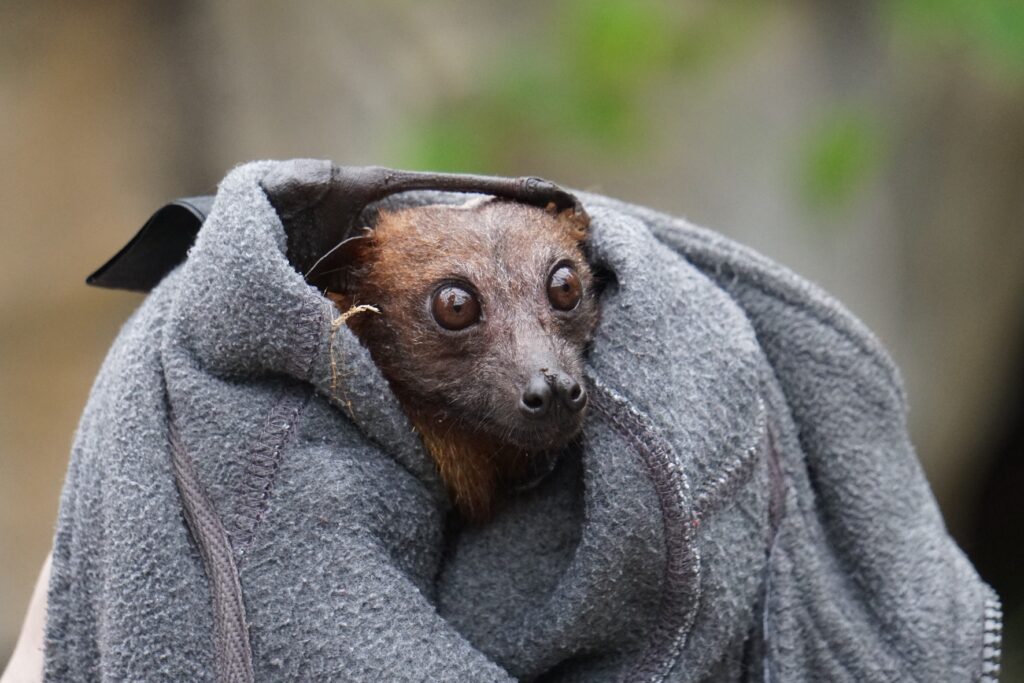Plants that grow together do not create an unified ecosystem called a forest. Underneath the trees, above them and around the plants, a myriad of lifeforms grow and the forest around them creates an unified lifeform called an ecosystem. Living beings such as animals and other creatures are only a part of this incredible creation. The delicate system can only be attained by the cooperation of all of the participants who live in the system. No living creature has the chance of survival if there are no other lifeforms surrounding them.
Tropical rainforests are an amazing example of biodiversity. The equatorial climate helps to improve the growth of plants and mushrooms that also improve the biodiversity of the forest for other life forms. In such a massive community of living creatures, it is important that everyone has its own role.
All species have developed cooperation with other species which can create a complete interdependence between them. As a result of this, the biggest protectors of the biodiversity that exists in the rainforests are the species themselves.
What seems to humans as a lush forest can be a total desert for some insects. Most herbivorous insects only feed on one specific plant. Finding that plant can be an extremely difficult task in a forest that has so many plants species. However it is important to note that thanks to the insects no plant species can become domineering, meaning that the balance between plants will remain.
In an artificial environment it is almost impossible to create the same ecosystem that exists in nature. Most inhabitants of the exhibition have learned to coexist, but in order to provide a harmonious balance between the species, many important specimens are not present.
The exhibit has animals bustling freely among the visitors, but letting too many go their natural way would result in the zoo’s lone predator skulking in the denuded vegetation.
That’s why the exhibition’s top predators- the fishing cats Tommi and Rosa – have settled in the rock-fenced garden.
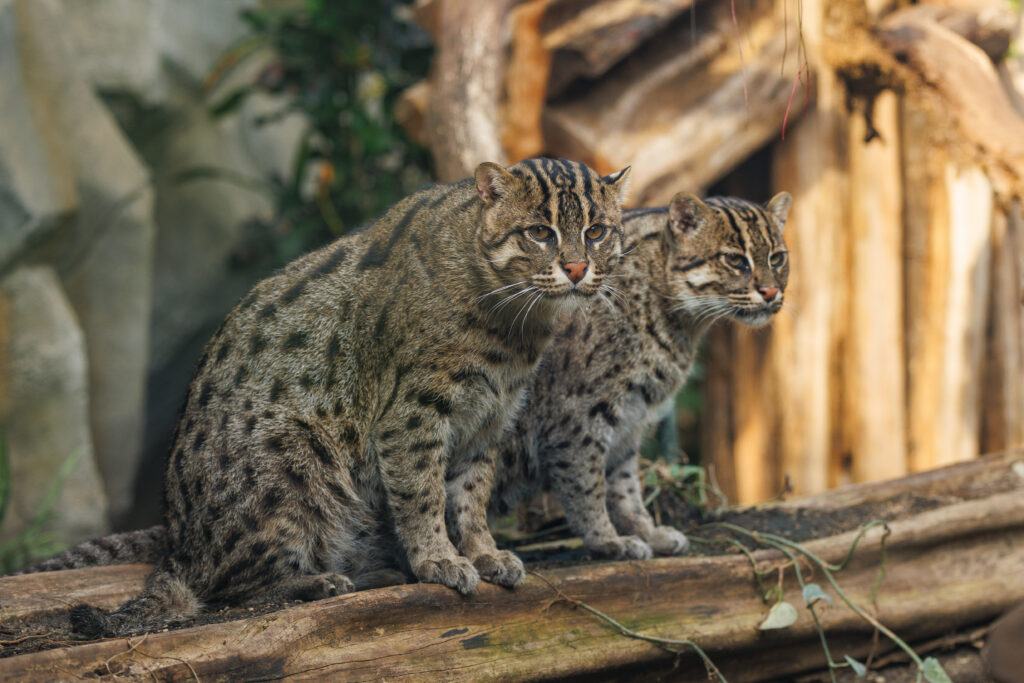
In the wild, they would be on top of the food chain. In the exhibition, the fishing cats are protected by a fence that has been built in the vegetation. This helps to create safety for all bird species that are flying around the exhibition, as the master hunters may not act too friendly with the birds that fly into their area.
It is worth visiting the zoo at different times of the day, as the spectacle can take place at different times of the day. If the pool turns out to be empty at the time of your visit, explore the higher levels of the garden. You’ll probably find something particularly feline in contrast to the un-catlike in the fish cage – lazily roaming in the rock pool.
In nature the food chain is equally clear to all. The animals, birds, incects and plants are a part of this sytem however some plants that turn the classic knowledge on its head. Potted plants have an ingenious strategy for growing in the mineral-poor soils of the swamp and montane forests of Southeast Asia – they eat insects!
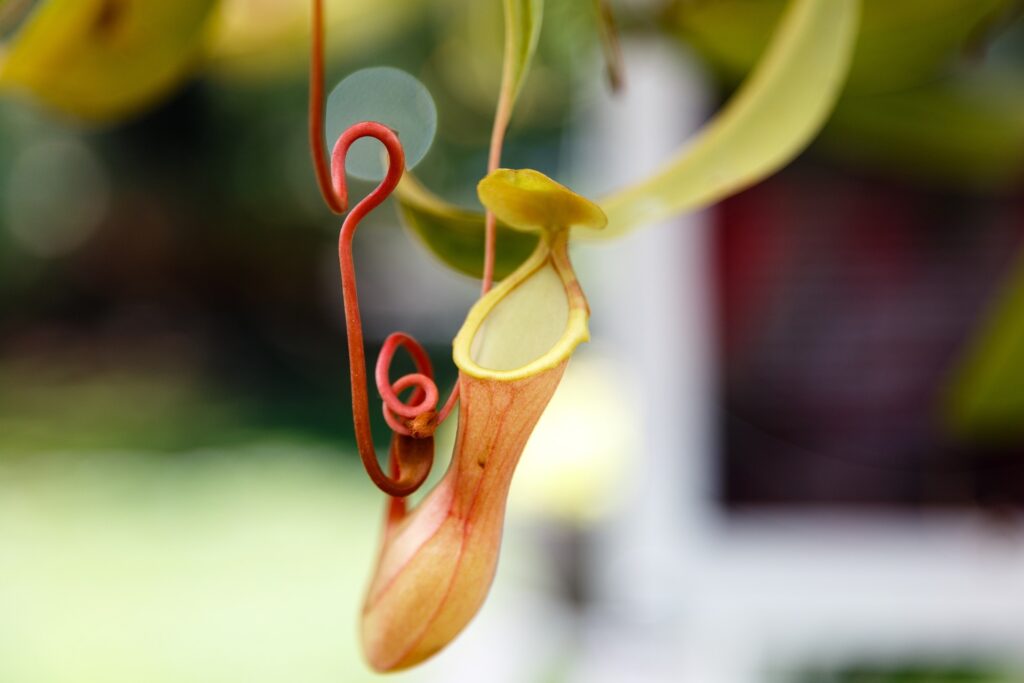
The pitcher plant catches insects in trap pots growing in the canopy. Partly filled with liquid, the pots are open at the top, many with a rain-proof lid hanging over the opening. The mouth is often reddish in colour, resembling a flower, and the rim of the pitcher exudes a sweet-scented nectar that attracts insects. However, the inner walls of the pitcher are slippery – as the insects eat the nectar, they lose their footing and fall into the liquid at the bottom of the pitcher. The plant digests the drowned insects using enzymes contained in the pitcher liquid.
Survival of the fittest’ is a basic tenet of Darwinian natural selection theory. Ever since it was first proclaimed, mankind has seen the world as a great arena of struggle, with constant predation and slaughter for survival. On the one hand, the description of the struggle for survival is apt – in nature, everyone eats everyone and everyone feeds everyone. Yet, by seeing nature as nothing but a food chain and competition, we have observed only one view of the whole of creation. By no means is it only the struggle and the ramming that is the driving force. Cooperation has an equally important place.
The continuation of life, or reproduction, is also necessary for survival in the struggle for life. Flowering plants have conquered the world only because of the alliance they formed with animals millions of years ago. Nearly 80% of all plant species need the help of animals to pollinate. Insects are the main pollinators, but in the tropics birds and Lyle flying foxes also play a role.
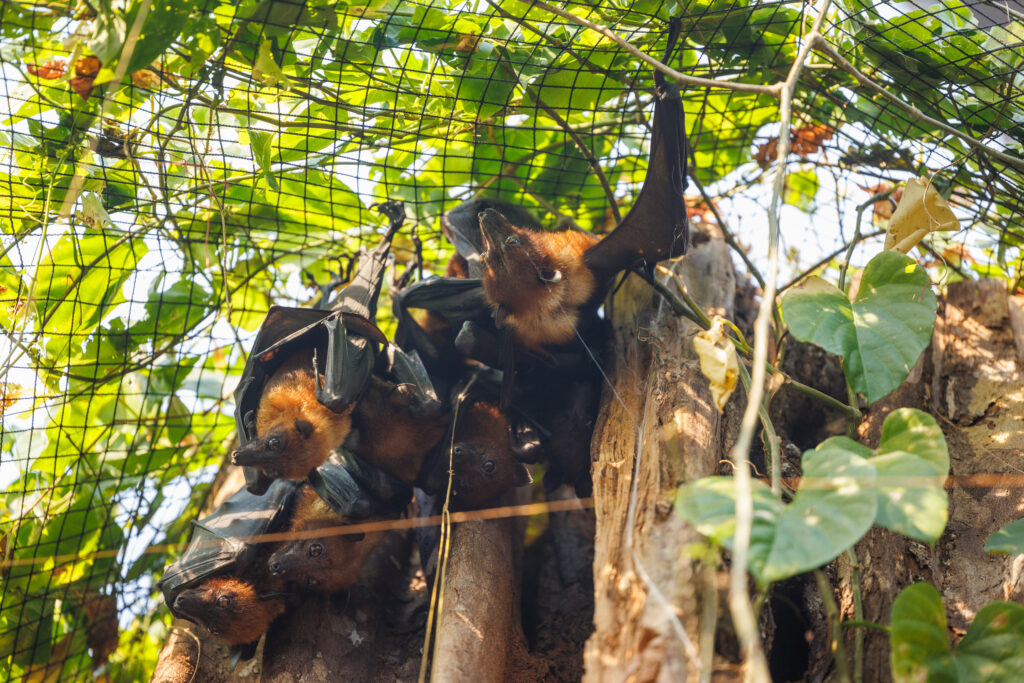
The eight-headed, bulging-eyed bunch watches from a safe height at anyone who stops under their home tree. In our folklore, bats tend to carry the label of a gloomy and creepy animal, but suddenly the staring bunch has the opposite effect. They’re a cute bunch! The flying foxes that have found a home in the zoo really do look more like a fox than the bats that live in Estonia.
The zoo’s flying foxes are cautious. The door to the garden was open all day before the little colony decided to move into the big hall. Still a scout patrol first, only to be followed by others. By now, a safe place has been found in the top of a tree trunk in the heart of the rainforest exhibition. The zoo keepers are watching with interest to see if this will be a permanent headquarters or if other higher branches and tops will be tried one by one. Increasingly daring daily flight exercises by the reconnaissance brigade suggest that the curiosity and the will to take the next steps are there.
Lyle flying foxes have long trunks, large eyes and small ears that suggest a highly developed sense of smell and sight. Sharp eyes and a good nose guide the fruit loving animal to the enticingly scented flowers and fruits. In return for a tasty mouthful, these animals will provide a taxi service to the next generation of trees to the place where they germinate. Along with many other rainforest animals, they are key seed dispersers for hundreds of plant species.
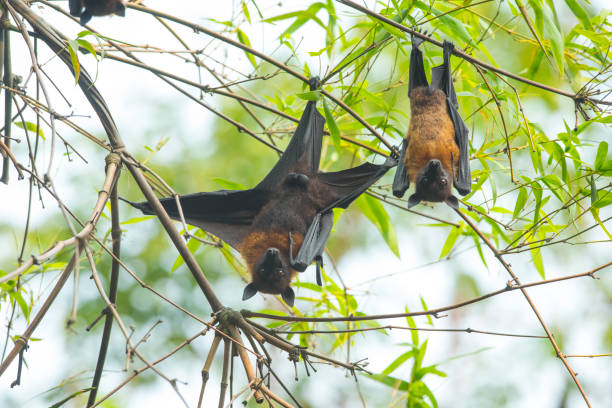
Unbeknownst to them, fruit-eating flying foxes are also covering the breakfast table downstairs in the darkness of night. Birds inhabit the flora of the exhibition hall, while amphibians the size of toads scurry around in the bush. No doubt that the fruit- and seed-eating birds will learn that it’s worth visiting the area around the Lyle flying foxes table when looking for food. Who knows, perhaps the birds will complete what the Lyle flying foxes have started and one day a young papaya plant will emerge from the soil.
Life in the rainforest bustles at different altitudes. The forest is like a large apartment building where the inhabitants of the lower and upper floors never meet. In the rainforest’s subterranean canopy and in the higher canopy, life goes on as if in parallel worlds. Despite the physical separation, a roof would be unthinkable without a foundation, and a foundation would be unsustainable without a roof.
Millions of meteoroid bodies orbit in space, carrying the building blocks of life – elements and molecules – or even life itself. In collisions, celestial bodies exchange goods with each other, constantly creating new material. In the rainforest, all the species that live there, be they micro-organisms, fungi, plants or animals, spread their life-forms in the manner of building blocks. Life creates the conditions for life.
Author: Leif-August Kirs


